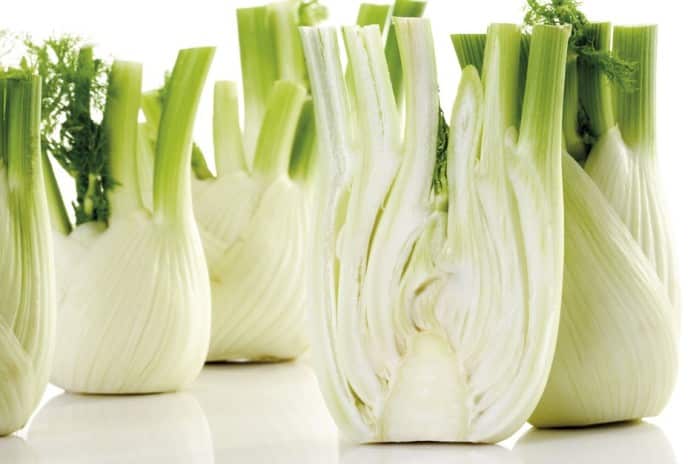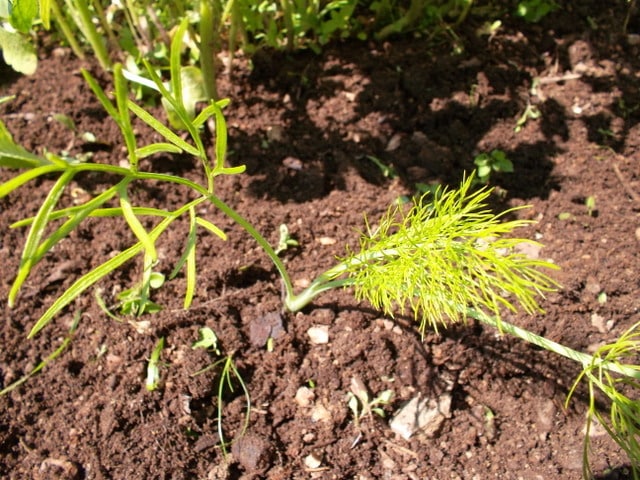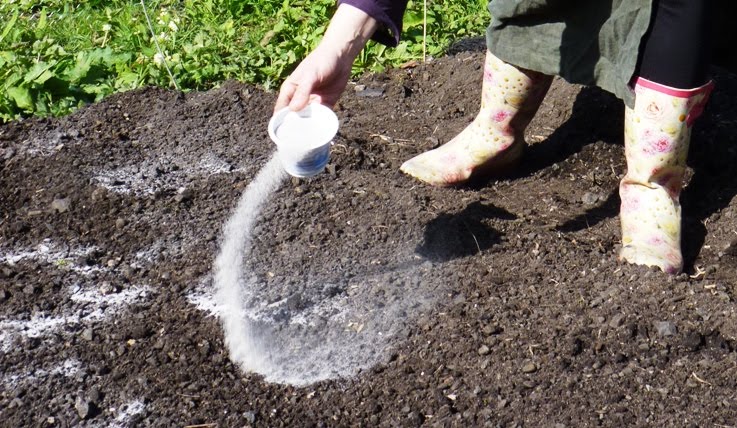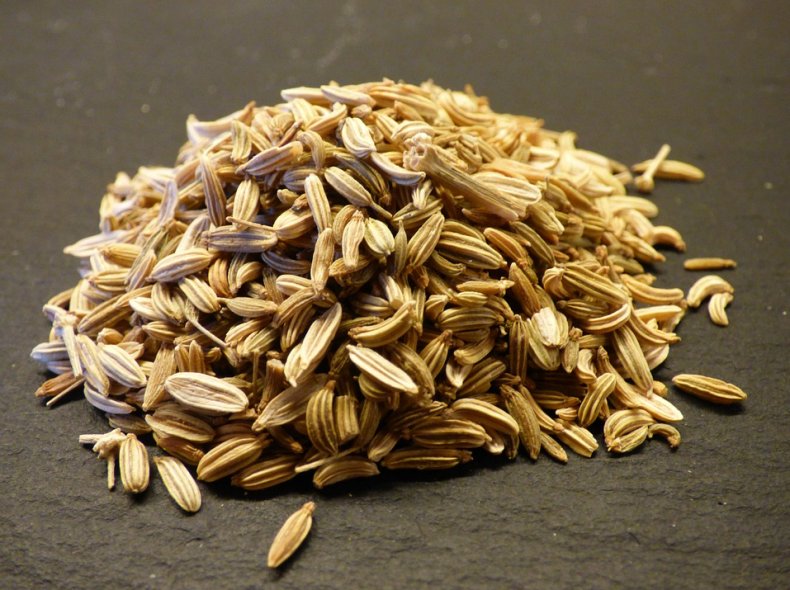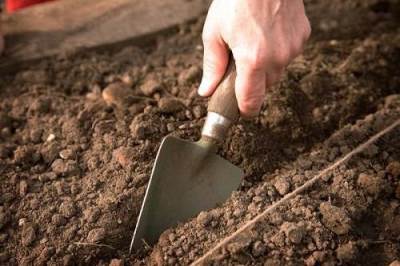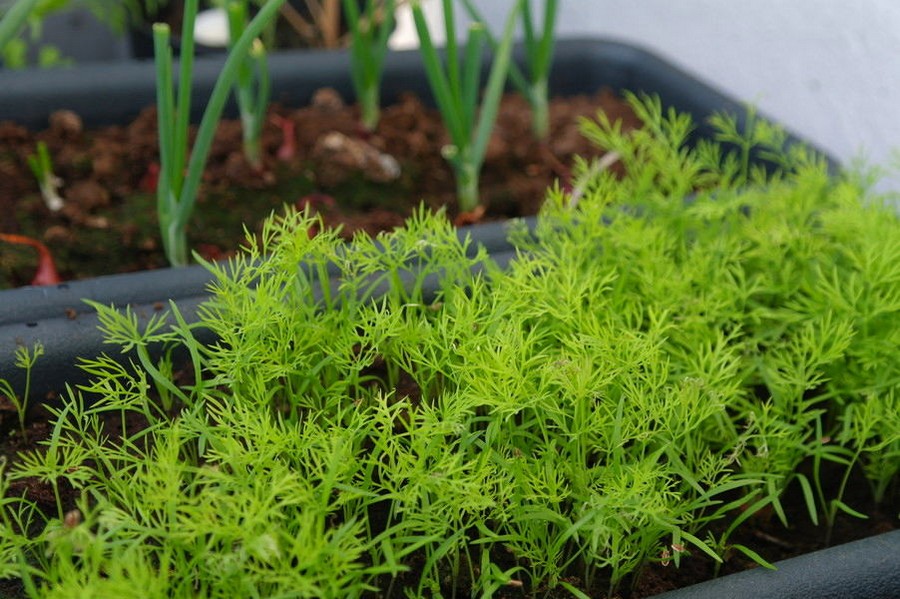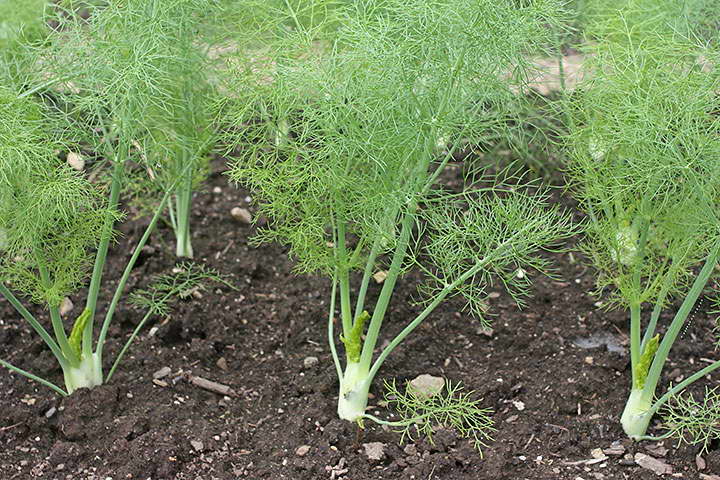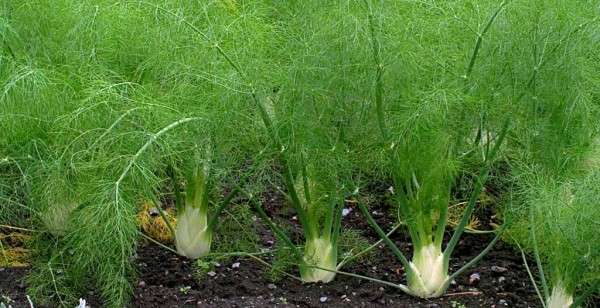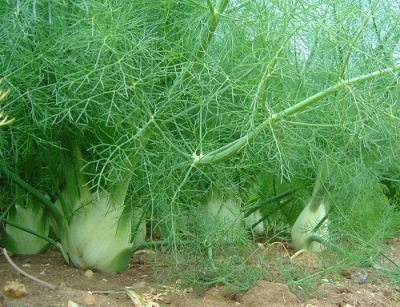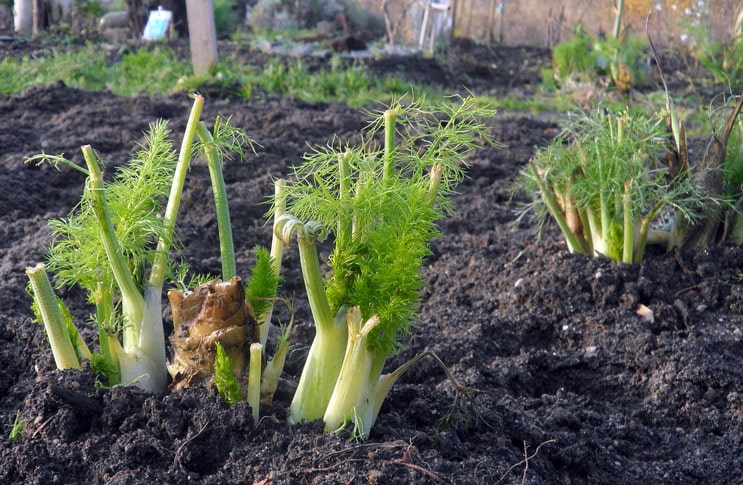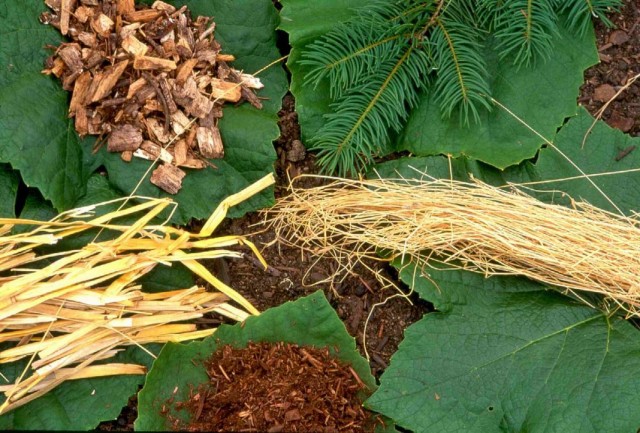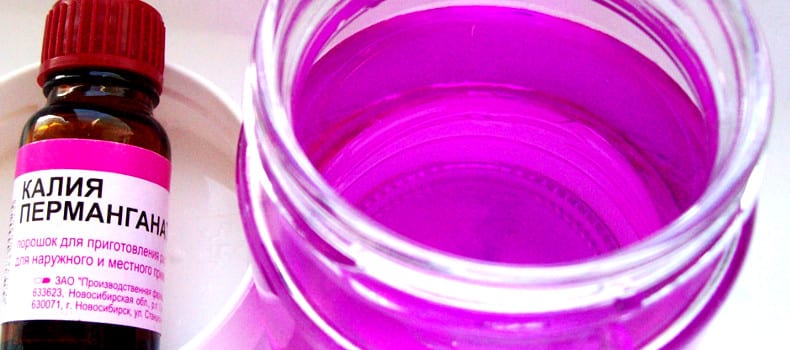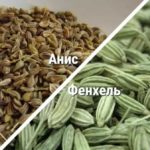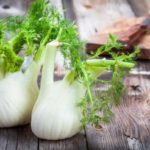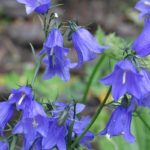Once upon a time, this culture was known to cooks, healers and ordinary people. Myths, beliefs, and prejudices are associated with it: the inhabitants of Hellas, according to legend, gave fire to people in a hollow fennel stalk. It is often confused with dill, but they are different plants. You can learn about fennel, proper cultivation and care of seedlings in open ground by reading this material.
- Description of the crop and common varieties
- The value of fennel
- In nutrition
- In medicine
- Choosing a site for growing fennel
- The best predecessors
- Lighting requirements
- Soil for planting
- Growing in open ground from seeds
- Soil preparation
- Seed preparation
- Sowing seeds in spring
- Pre-winter sowing
- Features of growing through seedlings
- Specifics of growing at home
- Plant care rules
- Parasites and protection against them
- Watering and loosening the soil
- Hilling
- Feeding fennel
- Mulching
- Shelter for the winter
- Methods of controlling diseases and pests
- How to harvest correctly
- Storing Fennel
Description of the crop and common varieties
Fennel belongs to the umbrella group and can be one-, two-, or perennial. In its natural state it grows on the African continent, Europe, America (North and South), Asia. In the Russian Federation, fennel is found in the Krasnodar region and the steppe regions of the Caucasus.
Prefers poor, dry soils and often grows along roadsides. The fruits and leaves contain essential oils with a characteristic odor and sweet taste. There are 2 main types of fennel:
- Ordinary.
- Vegetable.
The former is grown for its foliage and seeds, while the vegetable varieties (head and Italian) produce fleshy petioles and stems. Regular fennel is also called “sweet dill.” It grows to a height of up to 2 meters and is a frequent visitor to vegetable gardens and personal plots. The stem is straight, with a distinct ribbed structure.
The top of the plant is crowned with several umbrellas (from 10 to 20), each of them will have up to 25 bright yellow small inflorescences. Fennel is familiar to beekeepers; it is well suited for feeding bees.
The vegetable variety is distinguished by a highly branched stem. Fleshy heads of cabbage grow in places where the leaves are attached (petioles). In total, there are 7 types of vegetable fennel: Aroma, Luzhnikovsky Semko, Udalets, Corvette, Soprano, Leader, Autumn Beauty. A hybrid is also known - a mid-season plant of the cabbage variety Rudi F1.Oilseed brands Chernovitsky, Krymsky (Russian selection) and Sicilian, Italian large (foreign) also grow well in Russia.
The value of fennel
Fennel is used for many purposes: as a dietary supplement, in cosmetics, for medical reasons and as a preventative. In some cases, it cannot be replaced by anything else: this is the uniqueness of the plant.
In nutrition
Fennel oil and seeds are known as a common seasoning. The greens are sweetish, with a refreshing, pleasant taste. In culinary matters it is used raw - in desserts and salads, stewed with other vegetables. Bread is baked with fennel fruits; it is used for canning and salting homemade preparations. Caucasian peoples love to add greens to their colorful national dishes. Perfumers add fragrant oil to cosmetics, and the byproduct of squeezing the fruit is used as a lubricant in technology.
Important. Despite the external similarity with dill (umbrella flowering, spicy smell), fennel is a separate species, with its own characteristic features.
In medicine
As a medicine, fennel was used in ancient times - Hippocrates, Pliny and Avicenna recommended it to patients for:
- expectoration;
- eye treatment;
- kidney lavage (diuretic).
The main effect is achieved by using the fruits or oil squeezed from them. Bath attendants are familiar with the method of knitting brooms using branches and foliage of a plant.
A cough elixir is prepared based on fennel essential oils; the fruits have a laxative, wind- and choleretic, as well as a sedative effect. These include pharmaceutical fees. Mothers know what to give their children with bloating in the intestines, especially infants - dill water. It is also prepared from fennel seeds.
The beneficial effect of infusions from the plant on the excitable nervous system is well known: they improve sleep and increase stress resistance. The external effect of the decoction is to relieve inflammation in acne, dermatitis, and furunculosis. Cardiologists recommend fennel treatment for poor circulation and vascular problems.
Choosing a site for growing fennel
The seemingly simple herb is not so easy to grow: fennel needs moisture and light to grow fully. Before planting, the soil is plowed and systematically enriched with complex mineral fertilizers. The plot of land in the country does not have to be large, but it certainly needs to be well lit.
The best predecessors
The main rule for planting fennel is that it does not get along well with its “neighbors”: it is better to plant it separately from other plants. By sending out long and thin roots in all directions, the “quiet plant” is capable of pumping out moisture from the surrounding area.
If spinach, beans, cumin or pepper are nearby, they will have a depressing effect on the fennel, preventing it from developing. For growing crops, the best options for the previous “tenants” are potatoes, cabbage, cucumbers and peas - the fertilizers they are fed with are well absorbed by the umbrella plant.
Lighting requirements
Fennel is sensitive to light conditions. This means that areas for planting seeds or seedlings should be chosen that are sunny and open during the day. Any crops planted in the neighborhood that create shade (corn, sunflower) will interfere with the growth of the plant. But when growing vegetables, too much light can be harmful: long daylight hours do not allow for normal head setting.
Important. Tall plants that shade fennel bushes in the neighborhood are excluded.It is better to plant them separately, in another place.
Soil for planting
When choosing soil for growing, garden fennel is quite picky: it will not grow in abandoned areas, poor soils or poorly cultivated areas.
- Suitable: well-fertilized, dense, slightly alkaline soil.
- Not suitable: light, poorly plowed, poor soil.
Growing in open ground from seeds
Fennel is grown from seeds, which remain viable for 3 years. Experienced gardeners recommend preparing them before planting to increase the likelihood of a favorable outcome.
Soil preparation
Before sowing, the future fennel planting site is dug up to a depth of 25 centimeters or more (shovel bayonet). If something was growing on the site before, then digging is done immediately after harvesting. For depleted soils, fertilizing with mineral organic fertilizers is allowed. In the spring, before planting, the area is dug up again, to half the depth.
Then they perform loosening and leveling. Sometimes it is advised to apply fertilizer under the previous planted crop, so it will be better absorbed. Additional fertilizing may be required before sowing seeds. The following composition is usually used: ammonium nitrate, potassium salts and superphosphate in a ratio of 3:1:2.
Important. It is useful to mix vegetable fennel (seeds) with granular superphosphate fertilizer, this will increase the germination of seedlings.
Seed preparation
To do this, the entire seed stock must be laid out on a flat surface covered with a clean, light cloth. The matter should not be synthetic - this is important. Next, prepare a special growth-stimulating solution (weakly concentrated potassium permanganate is also suitable) and immerse the seeds wrapped in a fabric envelope into it.They should be evenly wetted and in no case float on the surface. Leave for 4 hours, then remove and dry.
Sowing seeds in spring
April is most suitable for garden planting; sometimes it is allowed to sow in winter (in September). Early planting means protecting the seedlings from bad weather and cold weather. It is better to plant vegetable varieties in the ground in the third decade of June, otherwise the heads of cabbage will form poorly.
Planting depth for all types of seeds is 2-3 centimeters. For spring sowing, it is recommended to carry out liming, add humus, compost or rotted sawdust. Covering dug and loosened beds with film will retain moisture inside it. The pitch of the beds is chosen to be half a meter. The first shoots hatch 5-6 days after planting, but this is if the average daily temperature does not fall below +6 °C. After 7-10 days, the seedlings are thinned, leaving 20-25 centimeters between them.
Pre-winter sowing
For full planting in winter, fennel turns out to be too pampered by the heat, but, subject to certain conditions, sowing in the fall is allowed. To do this, plants or seeds left for 2 years will have to be well protected from the weather and protected. Winter sowing is not fertilized, using the residues of mineral fertilizers in the soil from previous crops. Digging and loosening the area before planting seeds is required.
The entire top part of plants left for the winter is cut off, then they are covered with mulch, peat, and covered with sawdust. As soon as snow falls, the beds are additionally covered with a layer of several centimeters.Experienced gardeners claim that the likelihood of fennel successfully surviving the Russian winter is low: it is better to play it safe and plant it in a greenhouse, in which the seedlings will also then have to be covered with peat or leaves.
Features of growing through seedlings
The method works well when growing vegetable species: in this case, you do not need to worry about the normal development of root crops, which often happens when planting seeds. This method is also suitable for the short summer of Central Russia and the northern regions.
Planting is carried out in several stages: first, in late February-early March, the seeds are sown in seedling boxes. The appearance of the first sprouts signals the need for picking: they are carefully separated and transferred to separate flowerpots. It is possible to replace the procedure with thinning (with a step of 20 centimeters between adjacent shoots). After about 30 days, the final stage is carried out - fennel bushes are planted in open ground, in a garden bed, keeping a distance of at least 40 centimeters between them.
Specifics of growing at home
The green, fragrant “capriciousness” is also grown at home, on the windowsill. In conditions of constant positive temperatures, it is easier to provide him with comfortable conditions. You will need: flower pots or containers, boxes for seedlings up to 30 centimeters high and no more than 25 centimeters wide. The bottom is covered with a thin drainage layer: small pebbles can play its role. It is known from experience that well-fertilized soils with minor clay inclusions are suitable for fennel. It’s better not to take risks with acidity; the required level is pH 7.
Important. Ready-made soil mixtures for flowers (Terravita) maintain the required parameters of acidity and mineral content.If you add a little clay to it, you get a balanced composition for the fennel you grow.
Ready-made peat containers, which can be purchased at garden stores, are well suited for planting seeds. Soil is poured there and 2-3 seeds are slightly buried (taking into account future thinning). After planting, the crops are removed to a warm (but not hot) place.
Fennel is a light-loving crop, but at the initial stage of growth, the seeds need darkness. In open ground, sprouts sprout in 2-3 weeks; they need a temperature of +6 °C. If the tender roots are injured during transplantation, the stem and umbrellas grow, but the heads of cabbage do not set well (this is important for vegetable varieties).
When growing “for greens”, it is enough to wait until the shoots rise 25-30 centimeters, and you can harvest. For the “roots” you will need a voluminous container, because the heads of cabbage grow up to 10 centimeters in girth (the upper, above-ground part rises to 50 centimeters). The vegetative period in this case is up to 90 days.
Plant care rules
Fennel places increased demands on the composition and structure of the soil, light and moisture, but does not require special care when grown. It will be sufficient to fulfill a few simple requirements of agricultural technology.
- Firstly, weeding from weedy neighbors is mandatory - they will interfere with the development of seedlings.
- Secondly, replenishment with minerals and nutrients. Fertilizers are applied for the first time after thinning - fresh manure (mullein) is suitable for this.
When applied to the soil, the manure solution is prepared in a ratio of 1:3 (part humus to 3 parts water).To care for the plant and water the beds, the finished composition should be even thinner - 1:10. The seedlings are also fed with chicken droppings, but this is done carefully, trying not to burn the stems and diluting the fertilizer in a ratio of 1:50.
Parasites and protection against them
In the garden, in addition to cultivated useful crops, there may be dangerous “neighbors” - insect pests. These are beetle beetles and May beetles that destroy fresh greens. The larvae of swallowtail, carrot and umbrella moth butterflies love to eat fennel. It cannot do without the ubiquitous aphids and bugs (umbrella bugs, striped bugs).
For prevention, trapping ditches are dug around the area with the planted plant; the use of pesticides is unacceptable: they will all turn into green tops. It is better to use one of the reliable folk methods: spray the plant with a decoction of mustard, nettle or garlic - they repel pests well. Wood ash infused in water will also work. Fennel has diseases: cercospora blight, which affects the seeds, as well as phomosis, septoria blight and spotting.
Important. Treatment of fennel with Bordeaux mixture (a mixture of lime and copper sulfate in water) has worked well. This composition helps to get rid of diseases and insects quickly, without any consequences for the plant.
Watering and loosening the soil
Fennel loves water very much; its thin and long roots can stretch far to the sides and “steal” moisture from its neighbors (if the plant itself lacks it). It is recommended to water seedlings and mature bushes at least once a week (10-15 liters per square meter of area). Watering does not depend on the time of year - in the fall, if the weather is dry and windless, it is also carried out.
Hilling
Fennel planted in the soil must be hilled: this improves the growth of the root part, which is especially important for vegetable varieties grown for their heads. The procedure is carried out 2-3 times throughout the season, raking up the soil in a layer of up to 7 centimeters. Sometimes experienced gardeners, before starting hilling, put a plastic case made from a PET bottle on the plant - this way the greens get less dirty.
Feeding fennel
For this crop, fertilizer is required; it is applied with its predecessors (this is even better), or in the spring, almost immediately after planting the plant in the ground. Mineral complexes are used, as well as components of natural origin - cow and chicken manure, diluted to the required concentration.
Mulching
A simple but effective method allows you to provide seedlings with moisture, keeping it in the soil. As a layer of mulch, use sawdust, straw, leaves - any available material. The layer should not be less than 50 millimeters; it is updated as needed (checking the soil moisture).
Shelter for the winter
Fennel left to overwinter (for the 2nd season) must be properly prepared: cut off the entire top part, sprinkle with frost protection. Straw remaining after processing wheat, peat, small branches, and leaves are suitable for these purposes. Sometimes it is advised to leave about 40 centimeters of the stem with shoots for better snow retention.
The layer covering the underground part must be thick enough to prevent freezing. Specific parameters depend on the climate zone: the colder the winter, the more carefully the plants remaining in the ground are protected. After snow falls, the beds are additionally covered with it.
Methods of controlling diseases and pests
Fragrant fresh herbs attract the attention of bugs, which live in abundance in gardens and vegetable gardens, caterpillars, and bedbugs.
Several methods are most effective:
- To repel aphids, thrips, bedbugs, and caterpillars, spray with a solution of green soap: for this, 200-400 grams are diluted in water (per 10 liters). Bordeaux mixture (lime with copper sulfate) is also good.
- Bugs - May and crabweed - are neutralized with the help of trapping grooves that are dug around the fennel planting.
- Treating seeds before planting in a weak solution of potassium permanganate not only increases their germination rate, but also destroys disease spores. Additionally, the bed is watered with the same mixture before planting fennel.
- To prevent already infected (old) plants from transmitting the disease further down the chain, maintain a distance between rows and carefully destroy damaged specimens, isolating them from healthy ones.
How to harvest correctly
The collection of greenery begins when the foliage (umbrella shoots) reaches a length of 30 centimeters. You can do this all summer long, carefully cutting off the fresh, fragrant stems. Heads of vegetable crops can be dug up when they grow to a size of 8-10 centimeters. This happens in the fall, in August-September. To ripen the seeds, fennel is left for the next year, allowing it to overwinter. To prevent ripe fruits from starting to sow spontaneously, it is recommended to wrap them with thin gauze cloth.
Storing Fennel
Experienced gardeners say that preparing fennel for the winter means preserving useful vitamins until the next season, providing yourself with a supply of healing substances and a natural pharmacy.
Greens are dried and salted, the same applies to seeds. Root vegetables are stored like regular vegetables - in a cool, dark place.They are salted, pickled, and used in home canning.

